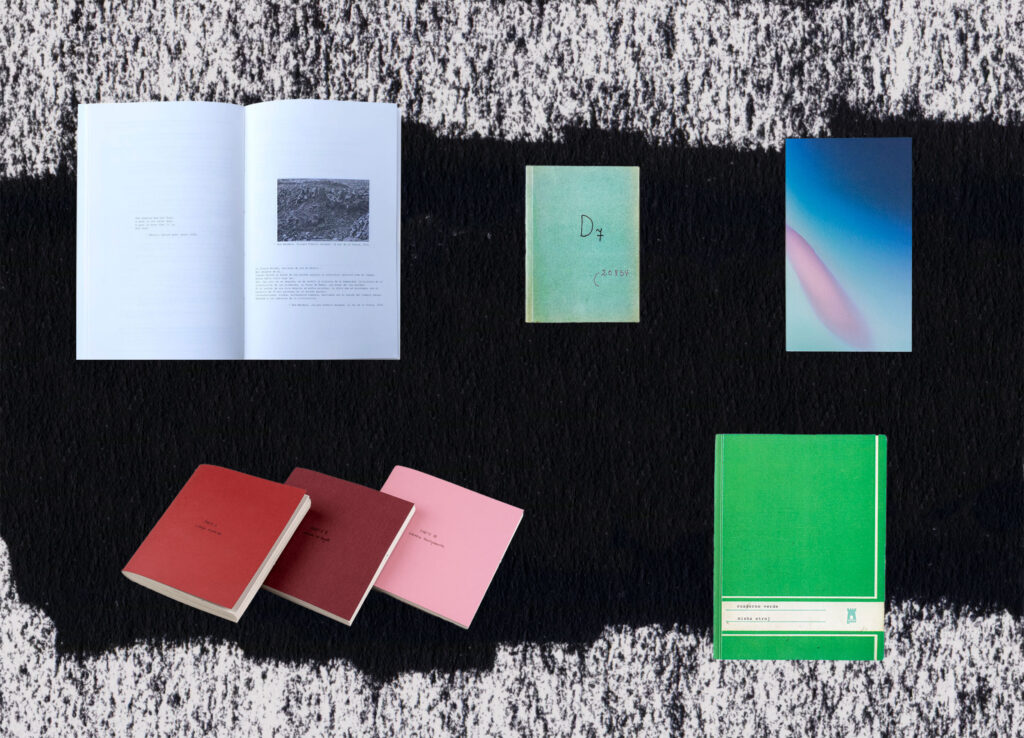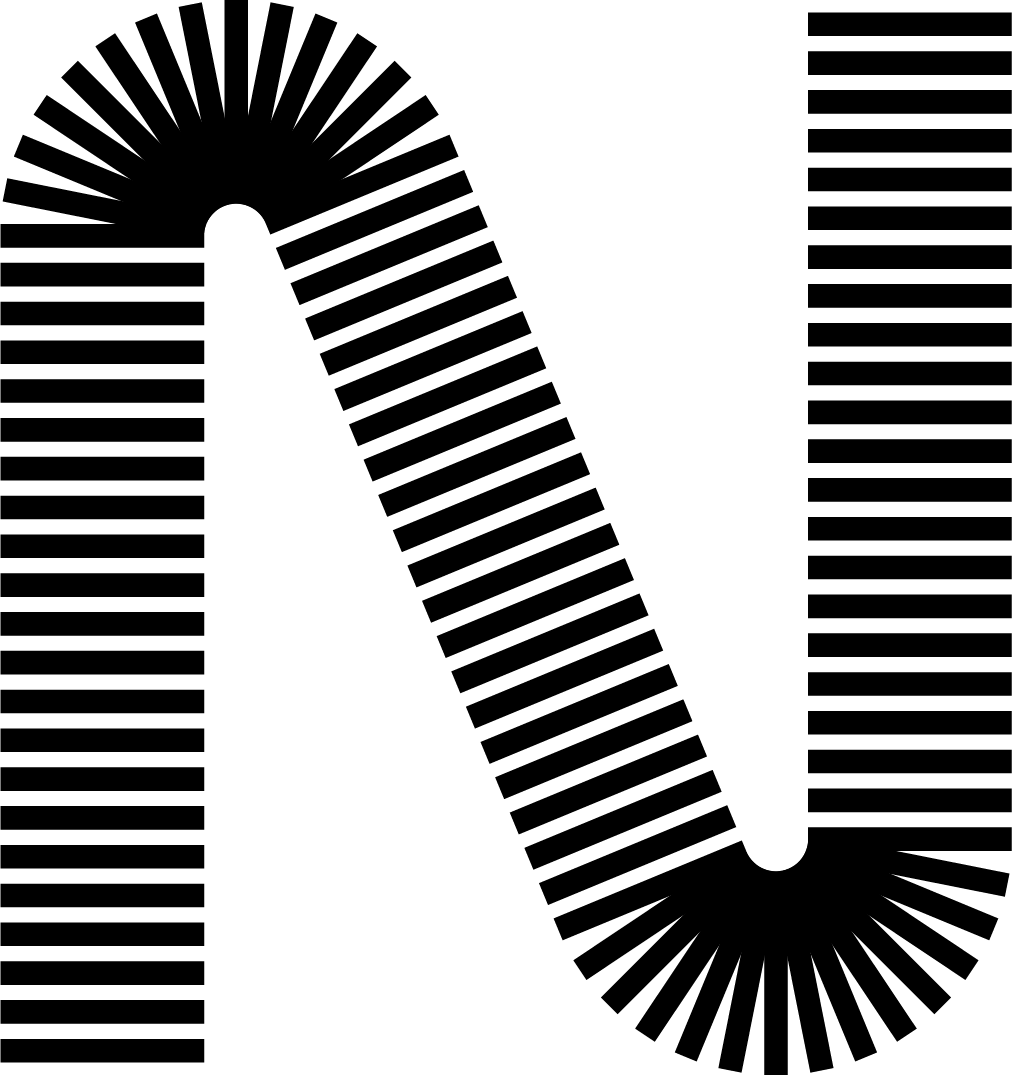Lists, journals, and field books. Formats y methods of registration. Ways to catch something that interests us through persistence.
In this month’s curatorship, we have prepared a selection of books from the catalog that employ various recording methods, including photographs of inhabited beds, notes from a trip, WhatsApp messages during the pandemic, a study of clouds, and an accumulation of textual and visual quotations.
Here is the selection:

- Libro de Camas – Paula Ábalos (Sur|Norte Editoras, 2022 )
Libro de camas (Book of beds) is an artists’ book by Chilean artist Paula Ábalos and published by Surt|Norte editoras that creates an autobiographical visual narrative through photographs and poetic texts. This work deals with themes around the non-home, inhabiting spaces that belong to others, the bed as a space where the conscious and the unconscious meet, and the traces that bodies leave in spaces.
It comprises three booklets chronologically: the first is about a period without a home (changing beds), the second about making a home, and the third is about leaving this bedroom (making it empty, erasing it from the space).
The publication features more than one hundred hand-glued photographs of beds, in a unique print run of fifty copies.
2. Cuaderno Verde by Misha Stroj (Vaticanochico, 2010)
It is important to mention that Vaticanochico, besides being a small neighborhood in Santiago whose streets are named after several bishops and archbishops, was a publishing house specialized in the publication of artistic research notebooks, founded by artists and researchers María Berríos, Ignacio Gumucio and Francisca Sánchez.
This notebook by artist Misha Stroj is an amalgam of materials collected during his three-month residency in Chile in 2009.
The book consists of forty-two chapters formulated in a kind of “pan-language” that uses the free association of images and text – each chapter is a sculptural problem to be solved. The collection includes press clippings and texts from three different literary sources: German excerpts from a novel by Ingeborg Bachmann; English excerpts from Faulkner’s novel “As I Lay Dying”; and Spanish excerpts from “El río” by Alfredo Gómez Morel. The latter was transcribed by the artist and also became a self-taught way of assimilating and learning Spanish.
3. Del reino de lo invisible by Paloma Villalobos (Naranja Publicaciones, 2023)
Del reino de lo invisible (Of the realm of the invisible) is an artist’s book by Paloma Villalobos in which the author reflects on the uncertainty provoked by the pandemic, from the compilation and assemblage of fragments of whatsapp chats received during the first weeks of quarantine and confinement in March of 2020.
The procedure of writing was developed from the selection of short phrases, in their majority emotional and highly interpretable, that the artist’s friends and relatives sent in those first days of perplexity. These ephemeral and virtual textualities were fixed with a process that is as analog and obsolete as the use of transferable letters (letraset) over paper. This sequence of phrases rewritten by hand, letter by letter, configures a choral poem, intimate and uncertain, which at times is interrupted by images captured in that same period that remind us of the momentary paralysis of human activity: decontaminated skies, vegetation sprouting spontaneously through cement, screens and collective actions of false hope.
The book suggests that from the “reign of the invisible” emanate certain threats that we will never observe. It is a reign that governs our lives without us being able to see it, touch it, nor control it and that, suddenly, fractures the course of “normality”. From this reign certain natural phenomena arise like earth tremors and certain pathogen agents like the virus.
The edition possesses a print run of twenty copies produced entirely in the workshop of Naranja Publicaciones and contains distinct forms of interventions handmade by the artist with letraset in each copy.
4. Modo Alternativos de Viaje by Sofía Enríquez (Minigolf Deportivo, 2021)
Modos Alternativos de viajes (Alternatives modes of travel) by designer and curator Sofía Enríquez is an essay that is constructed from different visual and textual fragments.
The central axis of the work is related to the body, travel and territory, and how the author’s texts merge with literary quotations, film stills and works of art. A visual-textual collage that transforms journey into a poetic experience.
Delicately produced by Minigolf Deportivo, the book has multiple images glued directly to the page between typography that unfolds freely, occupying the page as if it were a canvas.
4. Diario 7 by Juan Borchers (Vaticanochico, 2012)
Also published by Vaticanochico, D7 is a compilation of diaries made between 1951 and 1960 by the prominent Chilean architect Juan Borchers (1910-1975).
Borchers’ diaries allow us to follow the trail of his proto-ecological reflections on “architecture as a living animal”, in which every detail, from the membrane of a leaf to a map of the “geo-architectural” movements of the continents, leads him to develop a self-pedagogical reflection that affirms the organicist maxim that “everything is in everything”. In Borchers’ notebooks, the world appears as a place populated by architectural lessons that are revealed through the use of drawing, both as a methodology of observation and as a way of thinking architecturally. The intimacy of his journals reveals how the landscape has shaped him and how this experience becomes a system of itinerant learning about subjects as diverse as the horizon, coastlines, vegetables, the body, the morphology of clouds, the profiles of stones, football, and the simplification of forms in the distance, among many others.






 No products in the cart.
No products in the cart.